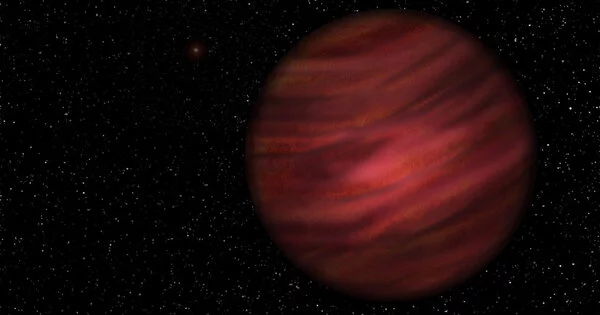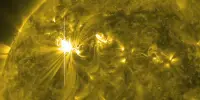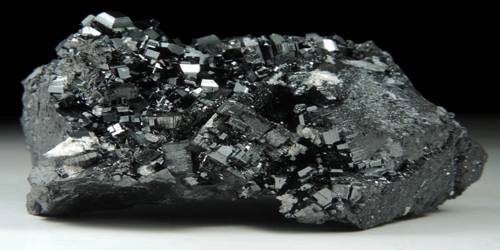The Hubble Space Telescope captured images of a Jupiter-like protoplanet forming in an “intense and violent” process, according to researchers. According to NASA, this discovery lends support to a long-debated theory known as “disk instability,” which attempts to explain how planets like Jupiter form.
Using radial velocity measurements, Japanese and Chinese astronomers discovered a new exoplanet orbiting a G-type giant star. The newly discovered alien world has a mass similar to Jupiter but is much hotter than the solar system’s largest planet. The discovery is detailed in a paper published on the arXiv pre-print server.
The radial velocity (RV) method for detecting an exoplanet is based on the detection of variations in the velocity of the central star caused by the changing direction of an unseen exoplanet’s gravitational pull as it orbits the star. So far, more than 600 exoplanets have been discovered using this technique.
Now, a team of astronomers led by Huan-Yu Teng of the Tokyo Institute of Technology in Tokyo, Japan, reports the discovery of a new giant planet as a result of RV measurements taken with the Okayama Astrophysical Observatory’s (OAO) HIgh Dispersion Echelle Spectrograph (HIDES). The planet orbits HD 167768, a deeply evolved solar-mass G-type giant star 353 light years away.
We were able to find a strong signal at 20 d for HD 167768 RVs, indicating a regular variation in the time series. The newly detected exoplanet, designated HD 167768 b, is estimated to have a mass of at least 0.85 Jupiter masses. It orbits its host every 20.65 days, at a distance of approximately 0.15 AU. The equilibrium temperature of this planet was calculated to be 1,874 K.
Huan-Yu Teng
“We were able to find a strong signal at 20 d for HD 167768 RVs, indicating a regular variation in the time series,” the researchers explain.
The newly detected exoplanet, designated HD 167768 b, is estimated to have a mass of at least 0.85 Jupiter masses. It orbits its host every 20.65 days, at a distance of approximately 0.15 AU. The equilibrium temperature of this planet was calculated to be 1,874 K.
Due to its parameters, the authors of the paper have classified HD 167768 b as a “warm Jupiter.” The planet has turned out to have one of the shortest orbital periods among those ever found around deeply evolved stars using radial velocity methods.

The host star HD 167768, estimated to be 5.3 billion years old, is of spectral type G8 III, has a mass of around 1.08 solar masses, and is nearly 10 times larger than the sun. It has an effective temperature of 4,851 K, and its metallicity is at a level of -0.75.
Given that HD 167768 is expected to ascend the red giant branch, the astronomers predict that its planet will be swallowed in a relatively short time in astronomical terms. By analyzing the orbital evolution, they estimate that HD 167768 b will be engulfed by the expanding star within about 150 million years.
The researchers also assume that at least two other planets may be present in the HD 167768 system, still undetected. This assumption is based on the two additional regular variations identified in the RV measurements.
“In the periodogram of the residuals, there are two additional signals at 41 d and 95 d with FAP [false alarm probability] slightly lower than 0.1 percent, suggesting possible extra companions in the system,” the scientists note.
















